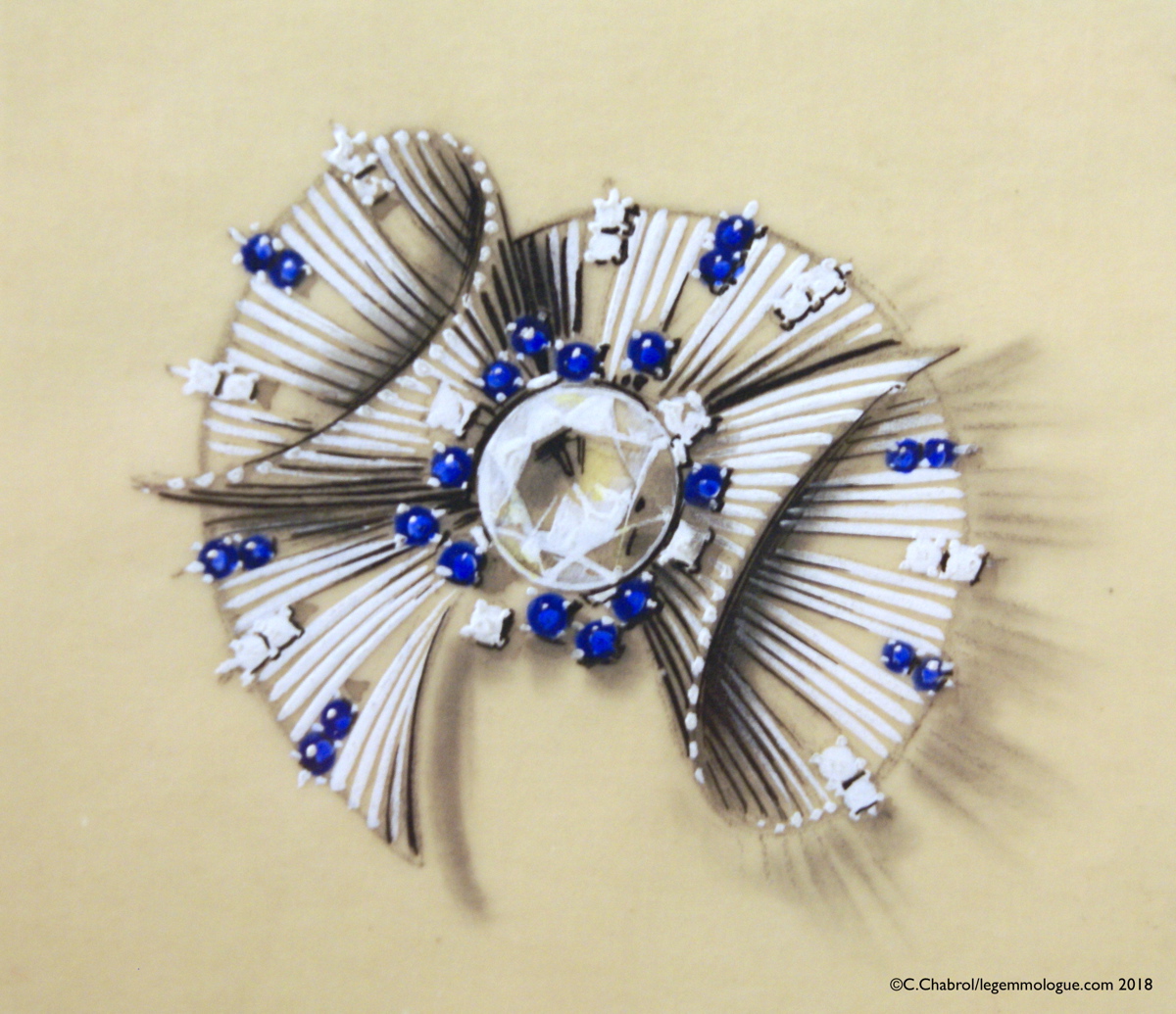A fortnight ago, I was invited to a press trip to discover the exhibition “Les Gouachés, a unique and ignored art” at the Musée La Piscine in Roubaix. As I couldn’t go, my photographer covered it. If I go to Roubaix soon to discover the exhibition, I already know the place very well for having visited it several times. I took advantage of the few days between the visit and the publication of this note to read the catalogue, to discover the different elements on display and above all to interview the discoverer of these very beautiful archives: Mr Frédéric Dael, jeweller in Lille and Arras, who did me the honour of talking to me about the history of his family and his house and of sharing rare historical documents here. I have had many discussions about this exhibition and I wanted to share with you my impressions of an exhibition that I think is important to see but which could have been the subject of more in-depth work by the museum on the technical reality of a jewellery gouache. I therefore propose that you discover an astonishing place, the history of a great family of jewellers established in the North of France since the 19th century and, above all, a technique – although in decline today – that was particularly important in the process of making a piece of jewellery until the advent of CAD and 3D some fifteen years ago.
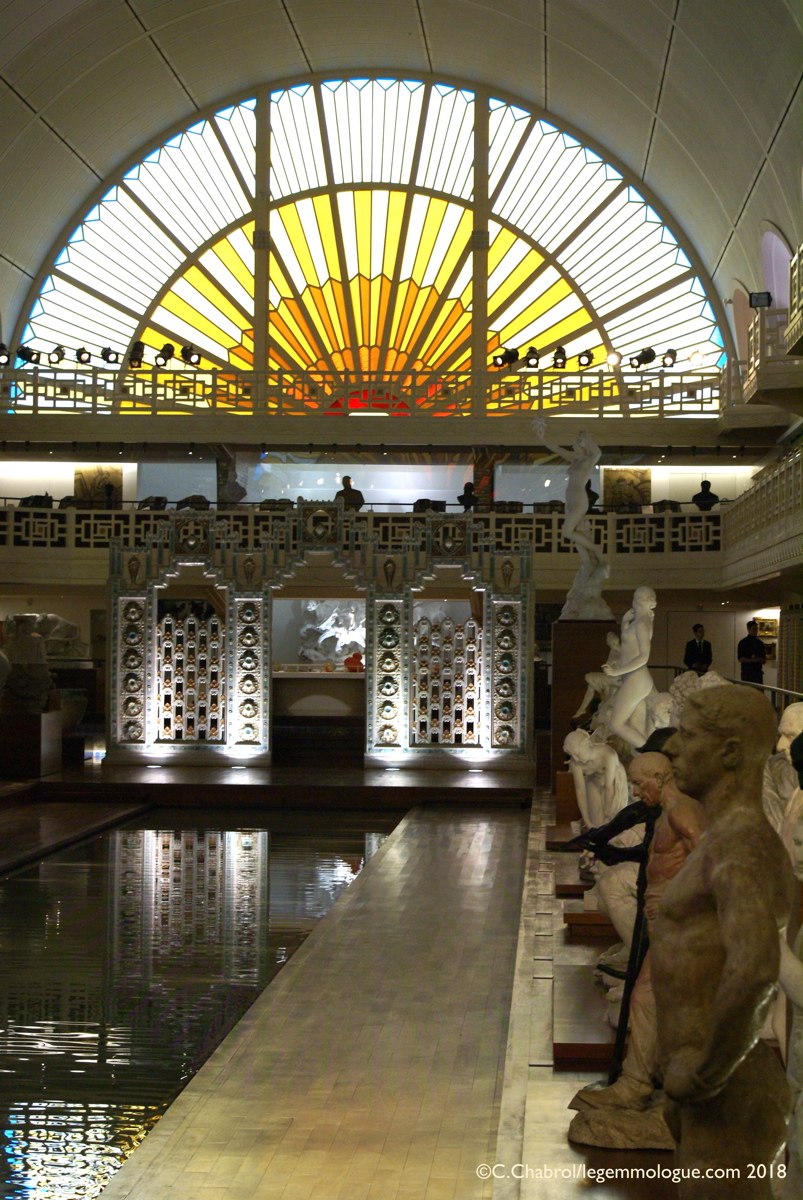
In La Piscine Roubaix. Photo: C. Chabrol
1- Gouache, why and how?
Gouache has always been part of the creative process of a jewel. For a long time, beyond the simple sketch, this technique has made it possible to highlight the reality of the jewel that was to be proposed to the client and then made. The gouache is therefore a highly technical and non-artistic exercise. It allows the stones, the metal (or the different metals) and the volumes to be coloured thanks to the shadows and the way the light will play on the piece. It is the first step of the manufacturing process. We speak of gouache because the designer will use this paint but he can use it on a wide variety of supports: paper, tracing paper, Rhodoid sheet allowing for the play of transparency in order to give the customer the most realistic version of the jewel. Sometimes, finally, ink and coloured pencil are added.
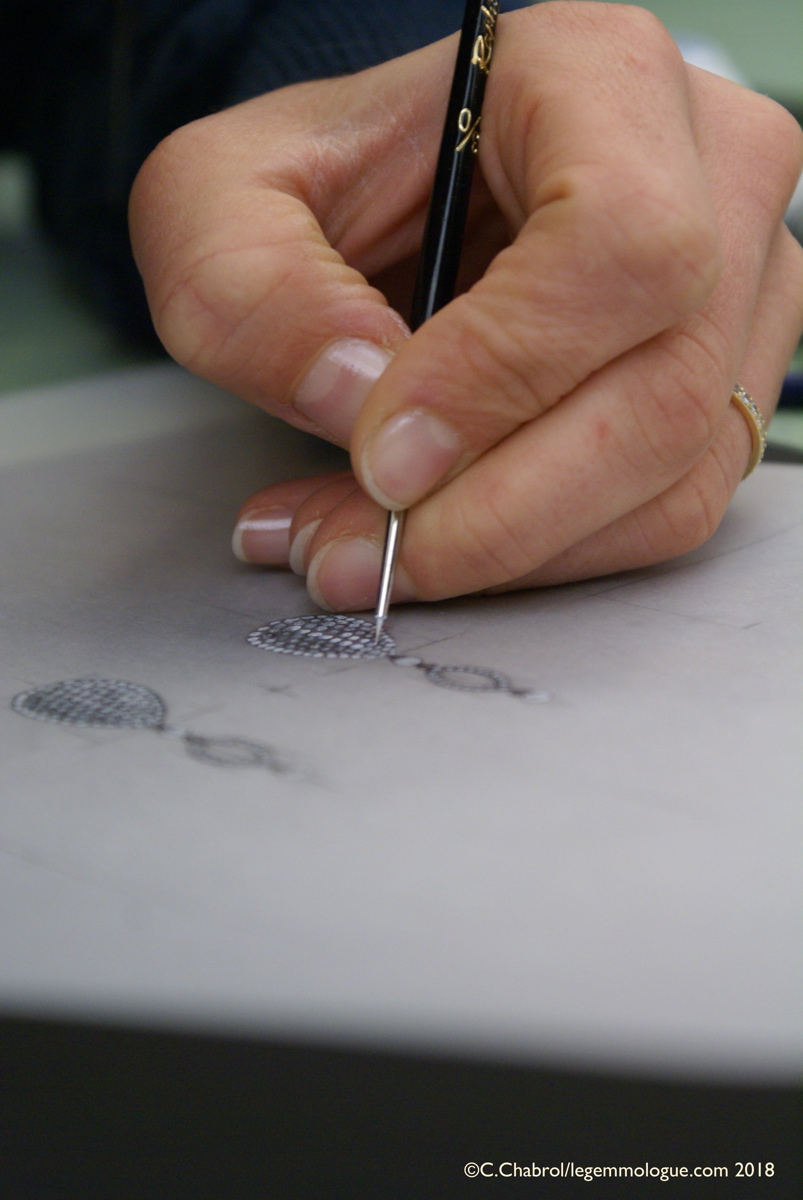
The designer of the Dael-Grau company, Laure Wehrung, in full demonstration of gouache during the visit. Photo: C. Chabrol
The use of this material can be explained by its low cost, its quick drying time and above all its ease of mixing to create shades and gradations between two colours. Once the drawing is dry, it is very easy to enhance it with various materials that do not pose any interaction problems. At the same time, a gouache can be reworked to a certain extent by re-wetting the paint, as it is a water-based paint. This means that there are never the problems that artists working with oils (pastels, paints, etc.) may encounter

Sketch of a brooch around 1940. Photo: C. Chabrol
A jeweller goes from the gouache to the realization without great difficulty if he is sufficiently experienced. Because the designer has often executed top views but also side views. A gouache drawing is made with ribs and, most often, to scale to facilitate the work. Finally, this drawing was not intended to be given to the client. Once validated, it was sent to the workshop and then to the company’s archives. Today presented as works of art (and we must acknowledge the talent of the designers), they were simple working documents.

Sketch of a brooch around 1940. Sapphires, rubies and diamonds can be seen. Photo: C. Chabrol
2- Dael & Grau and the forgotten archives…
Dael & Grau is a recent company in the sense that it has existed since 1973, the date of the merger of two large jewellers in the city of Tourcoing.

Letter announcing the merger of the houses Dael and Grau in 1973. Photo: Frederic Dael
For the Dael company, the story begins in 1830 when Clotaire Dael opened his workshop. At the end of the 19th century, his nephew – Auguste – joined him. He trained and became a jeweller in his turn. Georges (who developed the trade in diamonds acquired in Antwerp and Paris), then Jacques and now Frederic. The Denis Grau company has existed since 1838, as evidenced by a remarkable document that attests to the date of registration of its hallmark. Both houses are extremely well known among the great bourgeois families of the region. For we often forget the wealth of the great industrial names that participated in the construction and development of the region. The Villa Cavrois in Croix, for example, is a magnificent example of this, and I encourage you to visit it.
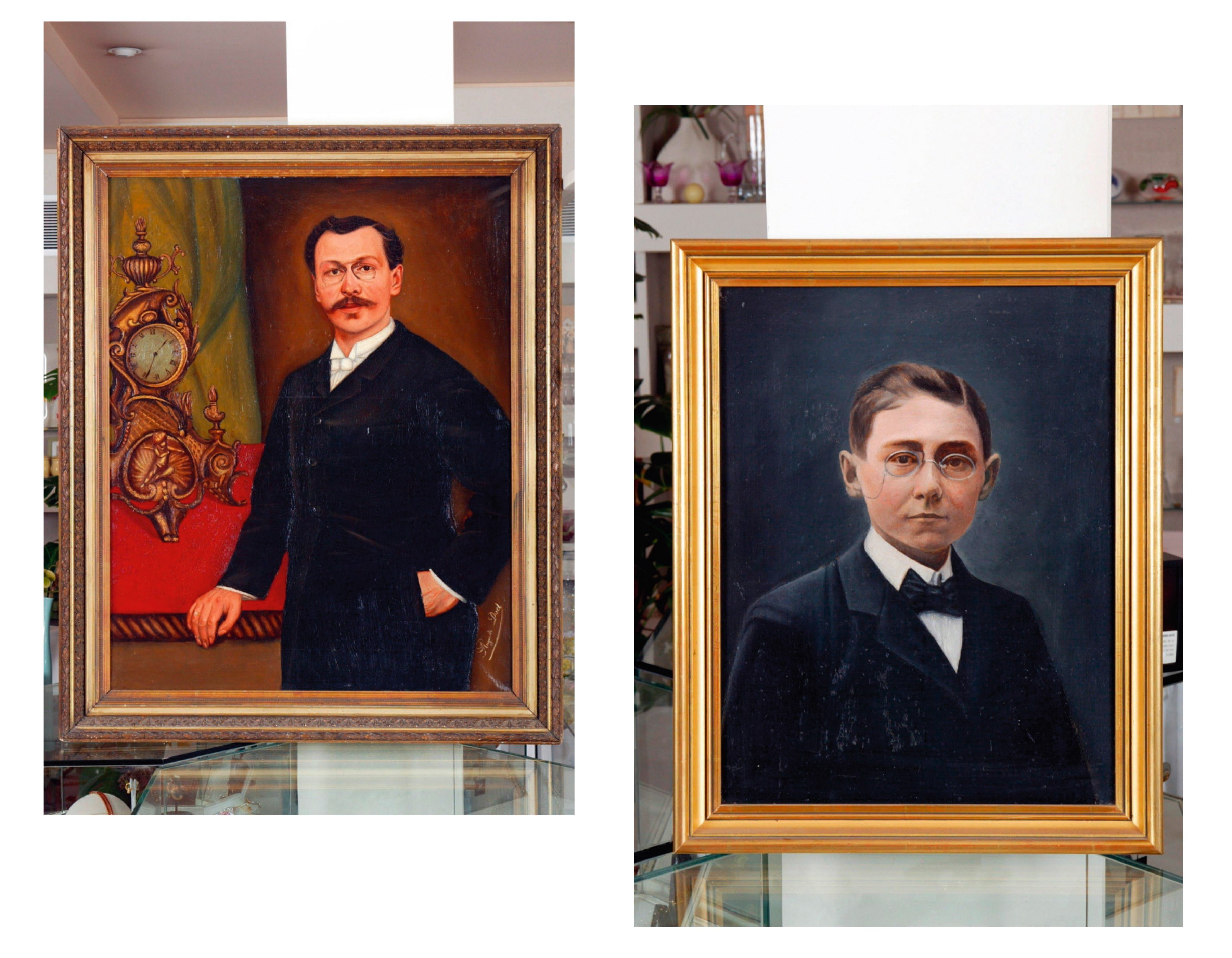
Portraits of Auguste and Georges Dael. Photo: Frédéric Dael


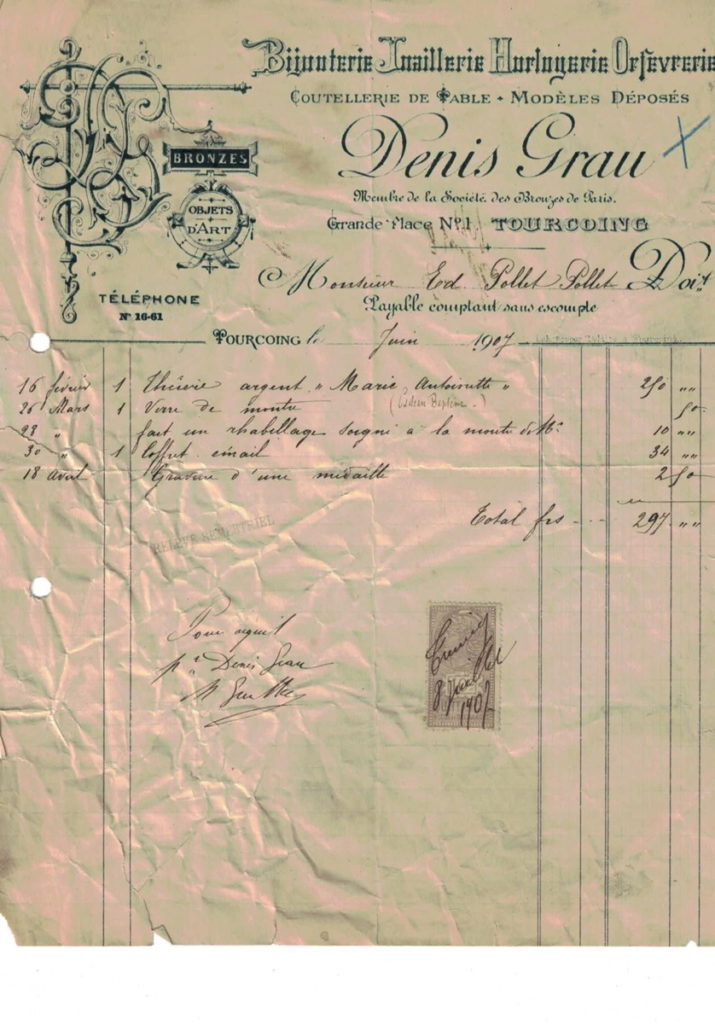
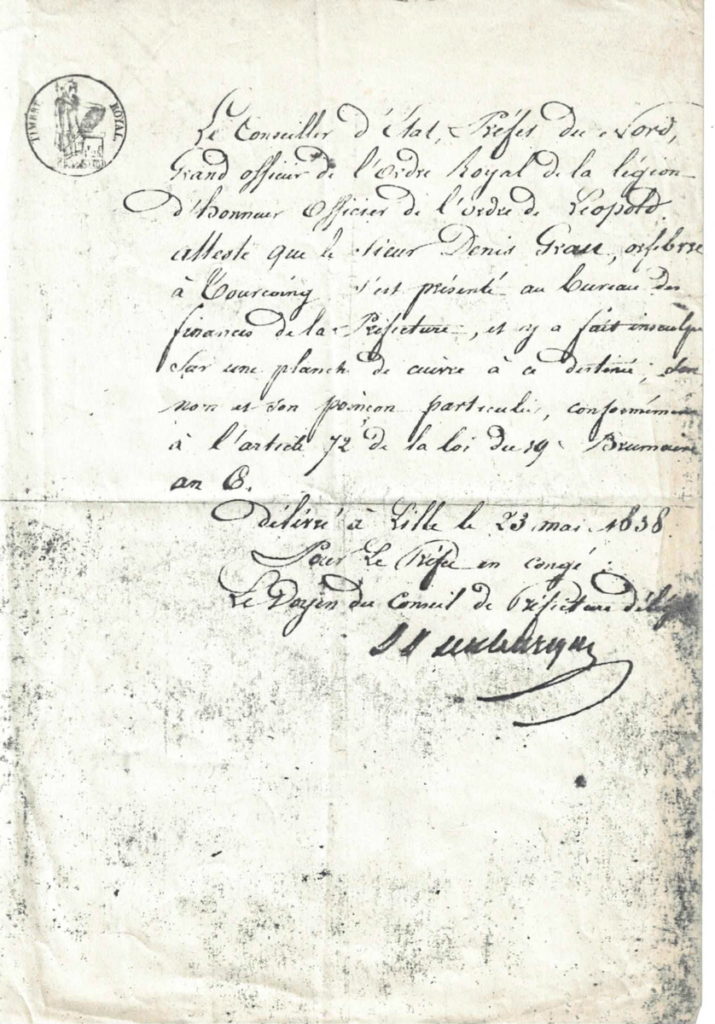

- 1- Document of the creation of the Grau hallmark in 1838. Photo: Frédéric Dael
- 2 / 3 – Apprenticeship contract between Auguste Dael and Auguste Debone taking effect in April 1919. Photo: Frédéric Dael
- 4 / 5 / 6 – Invoices from the Grau and Dael-Vermeulen houses. Photos: Frédéric Dael
After the Second World War and the gradual decline of the region’s industries, the situation gradually changed for the Grau company, which became old and less fashionable. The absence of heirs and a potential successor in the family encouraged Jacques and Georges Dael to move closer to it. They bought the business and the archives in 1973, closed the two shops respectively and opened a large shop on the Grand’ Place in Tourcoing in April of the same year. Today the company continues to exist and to create unique pieces for its customers. In the meantime, the historic boutique has closed and the company has opened two large sales outlets in Lille and Arras. It is this closure that allows the discovery of long forgotten archives.
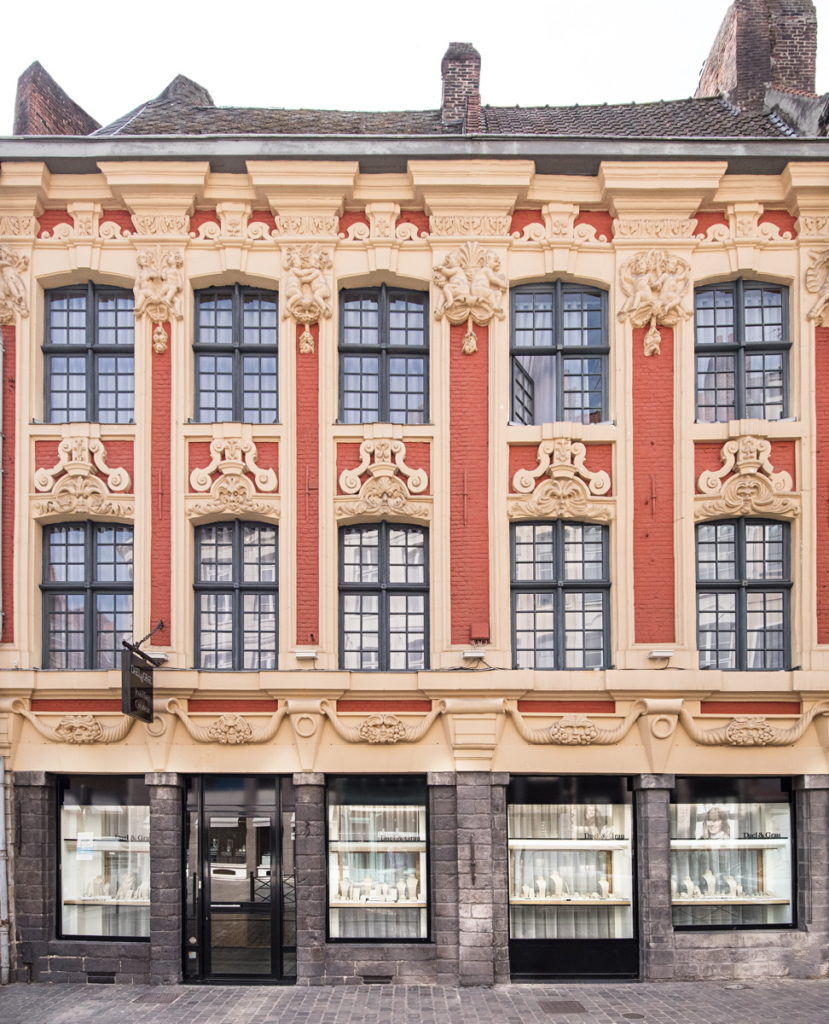
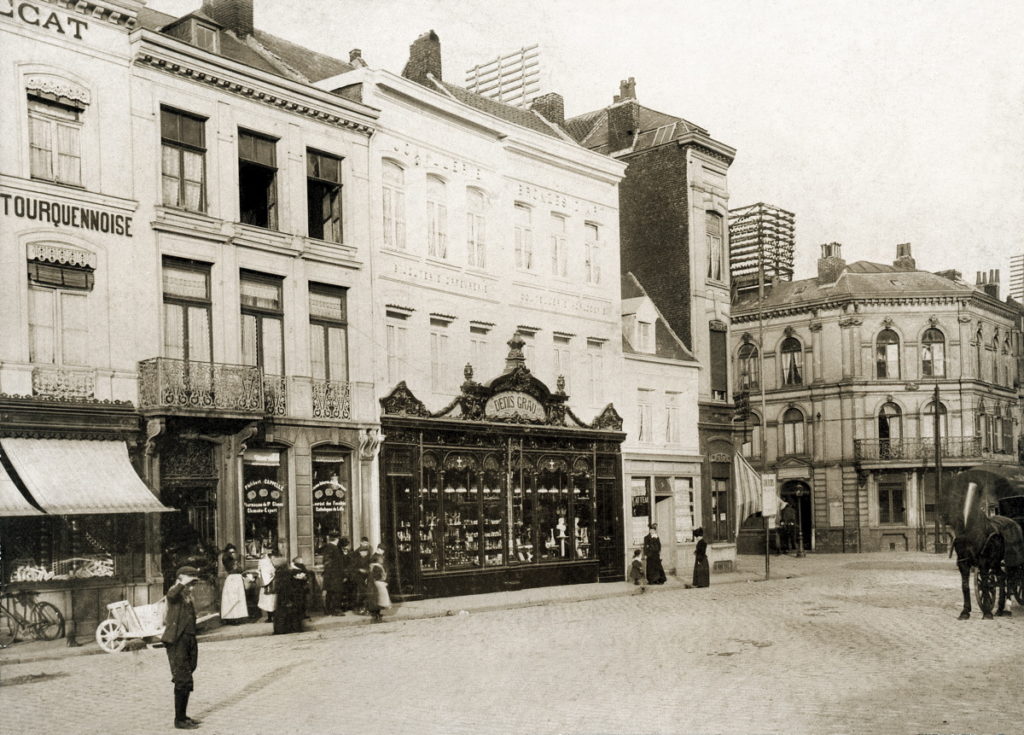
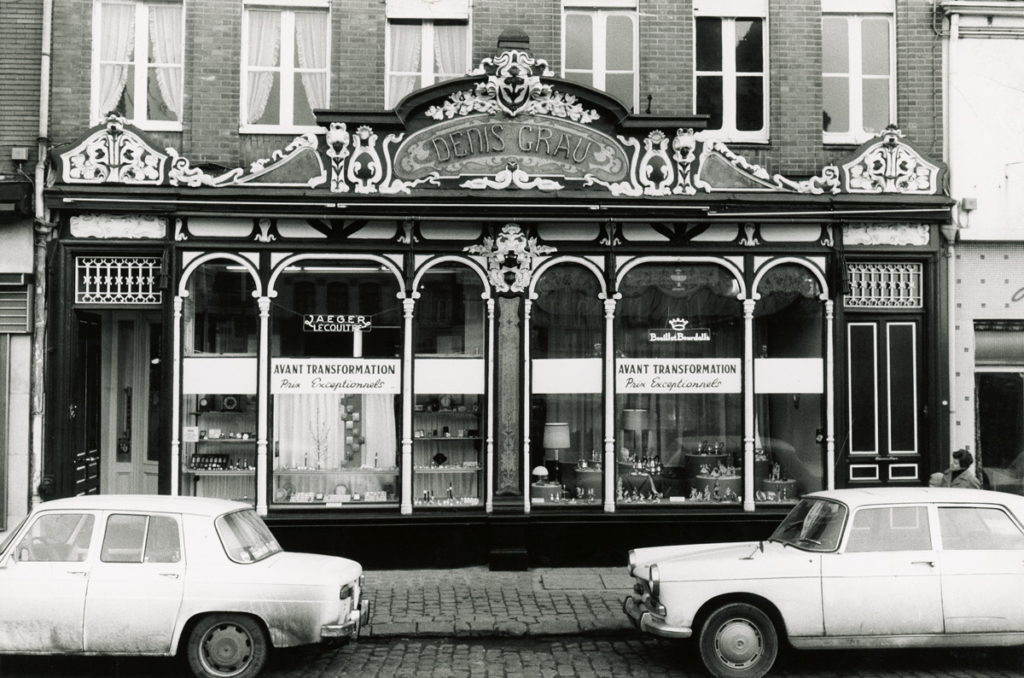
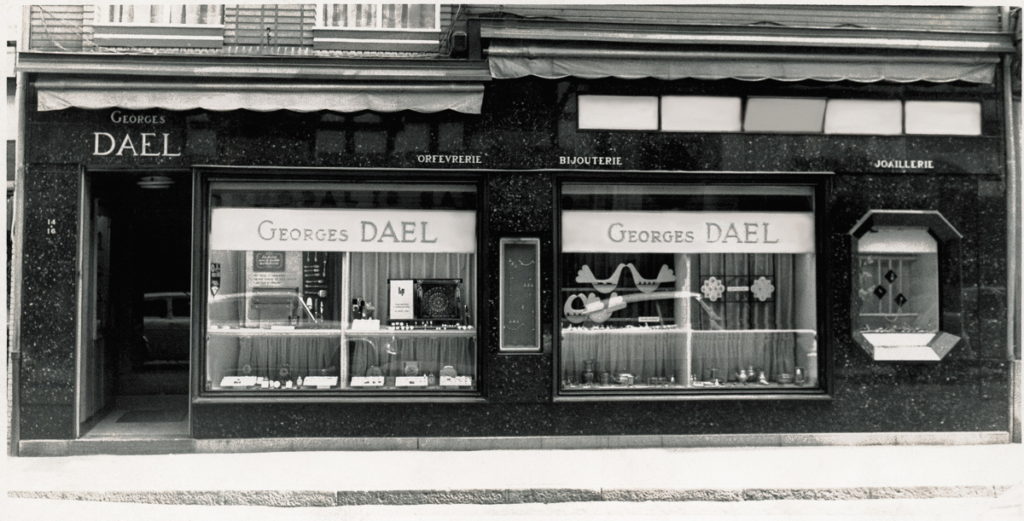
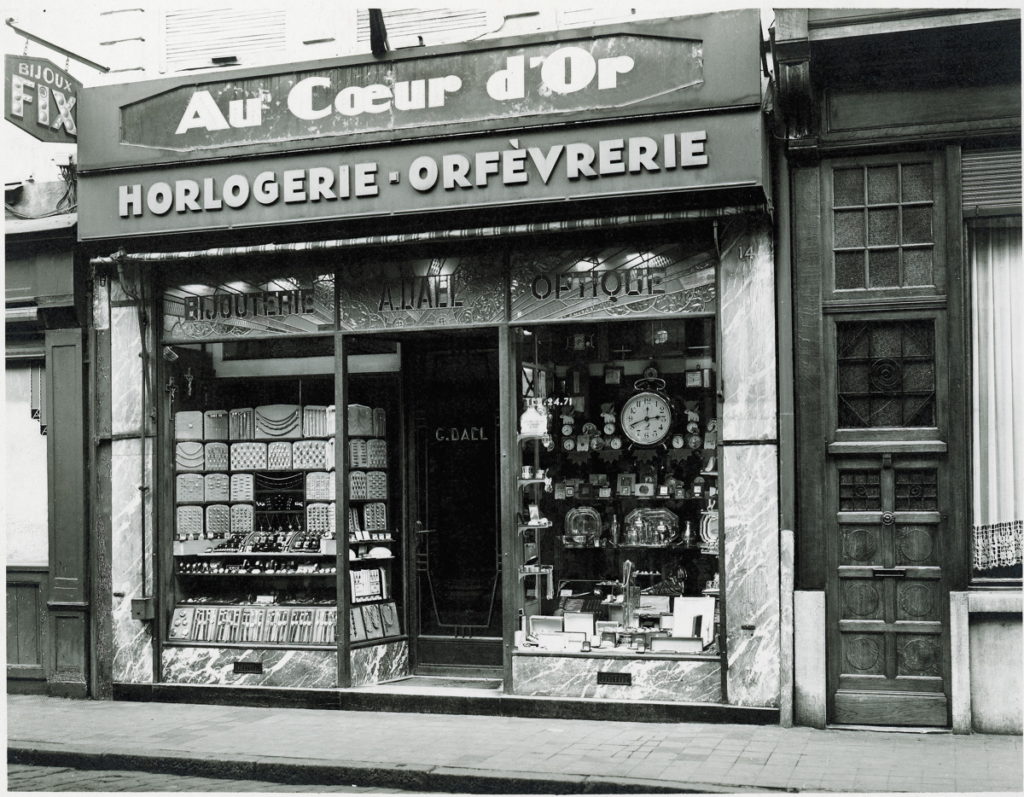
The various Dael and Grau shops over the years from the 19th century to the present day. Photos: Frédéric Dael
In 2011, the building housing the Tourcoing shop had to be emptied. In addition to the shop on the ground floor, the upper floors were used as storage space. Furniture and dozens of boxes were stored there. While emptying and sorting the place, Frédéric Dael discovered drawing boxes under a thick layer of dust. Miraculously protected, he pulled out nearly 700 gouaches, drawings and a few order books (including one specially dedicated to the deposit of pearl necklaces for stringing).

Gold and pearl brooch. 1940s. Photo: C. Chabrol
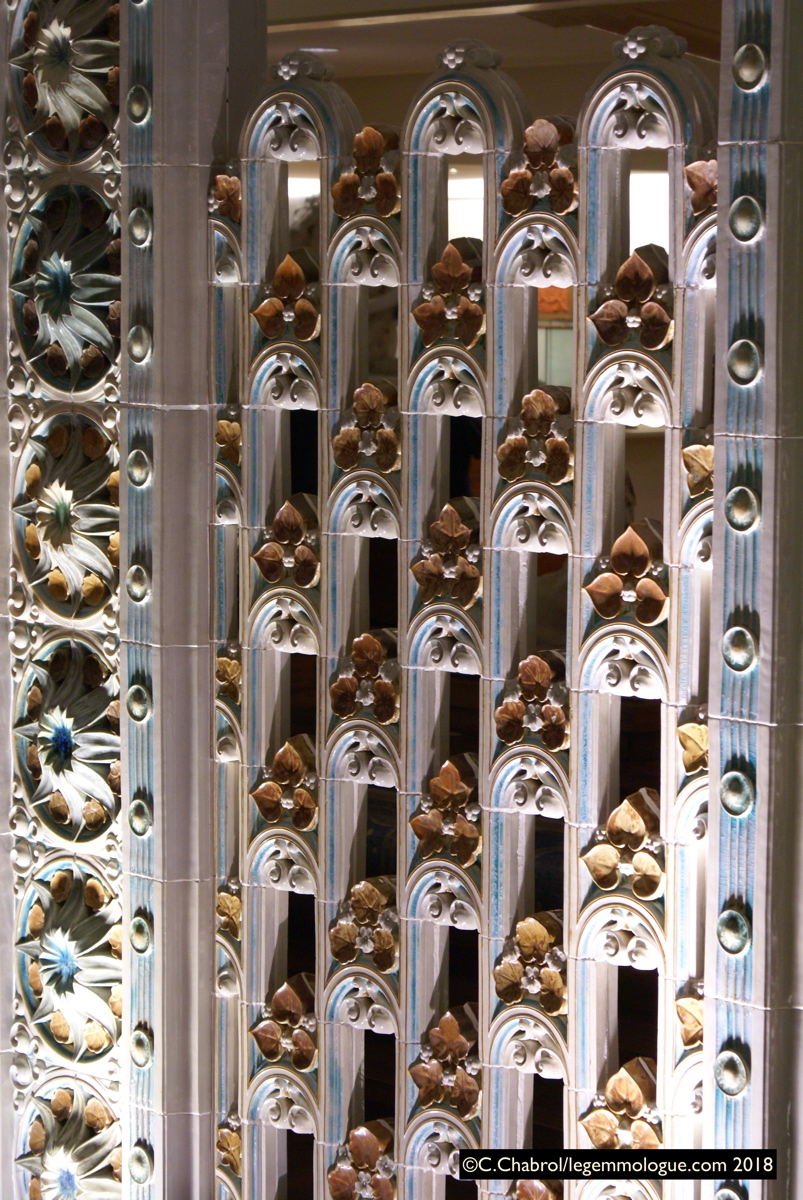
In the La Piscine Museum in Roubaix. Photo: C. Chabrol
He then sorted these different documents, classified them and very quickly imagined sharing them. He began by showing them from time to time to his customers and then considered exhibiting them in his two shops. But the premises are small and the passage through a jeweller’s shop is not like that of a museum… In 2015, he contacted the La Piscine Museum in Roubaix, which found the collection particularly interesting. Recontacted in 2017, the gouaches will finally be exhibited in 2018 to close the cultural season of the Museum which closes its doors in April 2018 to finalise its extension and renovation.

Gold and diamond brooch from the Grau archives. Photo: C. Chabrol
So, what do these documents allow us to discover? First of all, two main periods emerge from the drawings: 1910-1920 and 1940-1950. These drawings, aesthetically in keeping with the tone of these two periods, show the liveliness of the two houses, but first of all that of the Grau house because, as Frédéric Dael is convinced, it was truly more established among the bourgeoisie of the sector. This is evidenced by the firm’s stamps on many designs, as well as the sufficiently large stones (diamonds, sapphires, rubies and sometimes emeralds) on many projects. But more than that, these archives reveal extremely high-quality and meticulous workmanship, attesting to the presence of qualified workshops. Finally, the different groups of drawings make it possible to identify different “hands” and therefore different designers, certainly depending on the period and origin. The quality of the documents is quite fabulous and suggests that these two houses enjoyed a certain financial prosperity.

Detail of a gouache of a gold and diamond necklace. 1950s. Photo: C. Chabrol

In the Museum La Piscine Roubaix. Photo: C. Chabrol
3- La Piscine, an obvious place for this exhibition.
Of all the cultural venues in the north of France, several were broad enough to accommodate the collection that Frédéric Dael wanted to bring to life and discover. Nevertheless, few have the originality and real dynamism for art from the industrial heritage. But La Piscine does. Built between 1927 and 1932, this Art Deco building with its remarkable architecture is – for its time – incredibly modern. After years of loyal service, it closed its doors in 1985. The fragility of its vault no longer allows bathers to be welcomed without risk.

In the exhibition. Photo: C. Chabrol
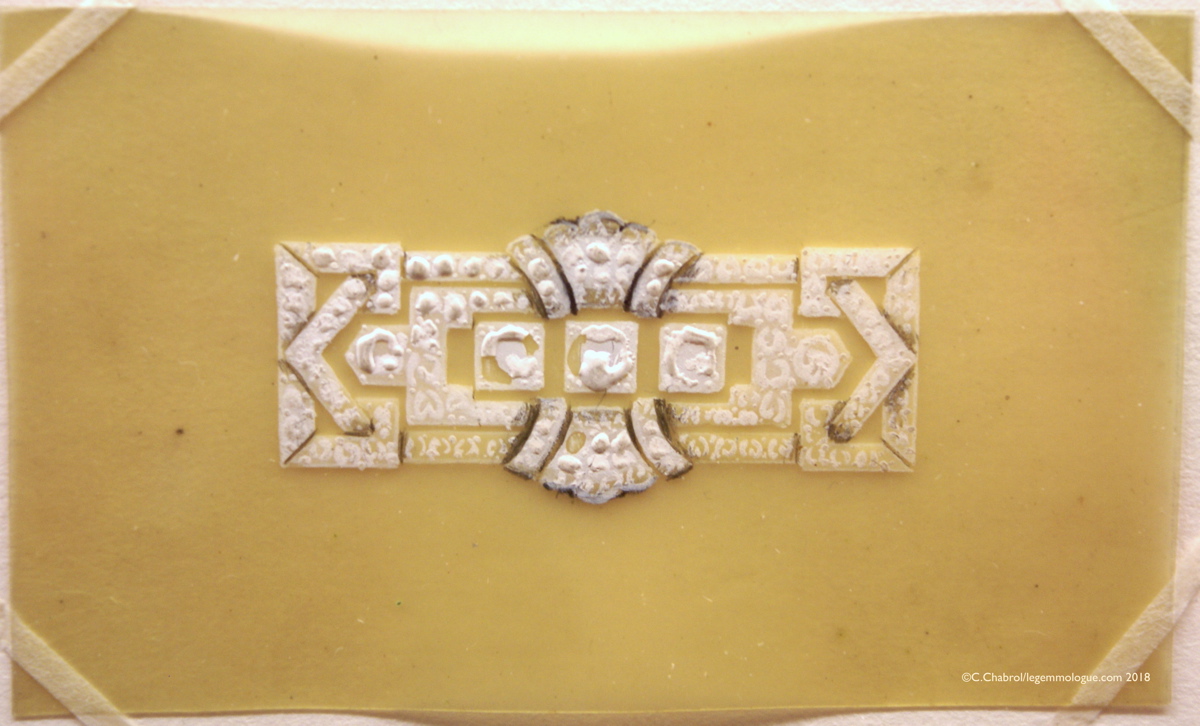
Gouache on Rhodoid, ca. 1920. Photo: C. Chabrol
As early as 1835, the city of Roubaix inaugurated an industrial museum to protect thousands of textile samples manufactured in the city. The “tissuthèque” is now accessible at La Piscine and is a must-see. It is a treasure trove of imagination and surprisingly modern! This historical museum will undergo many upheavals to close in 1959. To this day, it is the only case in France of a museum decommissioned by the State… A sad time. In 1990, the question of a new museum was raised; at the same time, the city of Roubaix faced a major challenge: finding solutions to revitalise a city that was in great difficulty at the time. Under the impetus of the mayor and especially Bruno Gaudichon, curator of the current museum, the disused swimming pool was identified as a possible location. The project was approved in 1992. Major works were undertaken and this new innovative cultural venue opened its doors to the public in 2001.

Brooch in gold, diamonds, sapphires, perhaps aquamarine or pearls.
The exhibition is located around the old cabins where bathers could change before entering the pool. The exhibition is quite small because of the size of the drawings. A gouache is made on A4 sheets and sometimes even smaller ones. It allows us to discover the jewellery projects of the Dael and Grau houses but, in my opinion, lacks explanations on the technical importance of a gouache and historical references. It is more of an academic exhibition on the art of designing jewellery than a technical exhibition. In my opinion, this is its only weakness. In my defence, I am terribly curious and like to know if a design was made, how and for whom! At the same time, jewellery making is my profession and I cannot dissociate a gouache from its possible manufacture. In spite of this, it is obvious for me to encourage you to go and discover it.
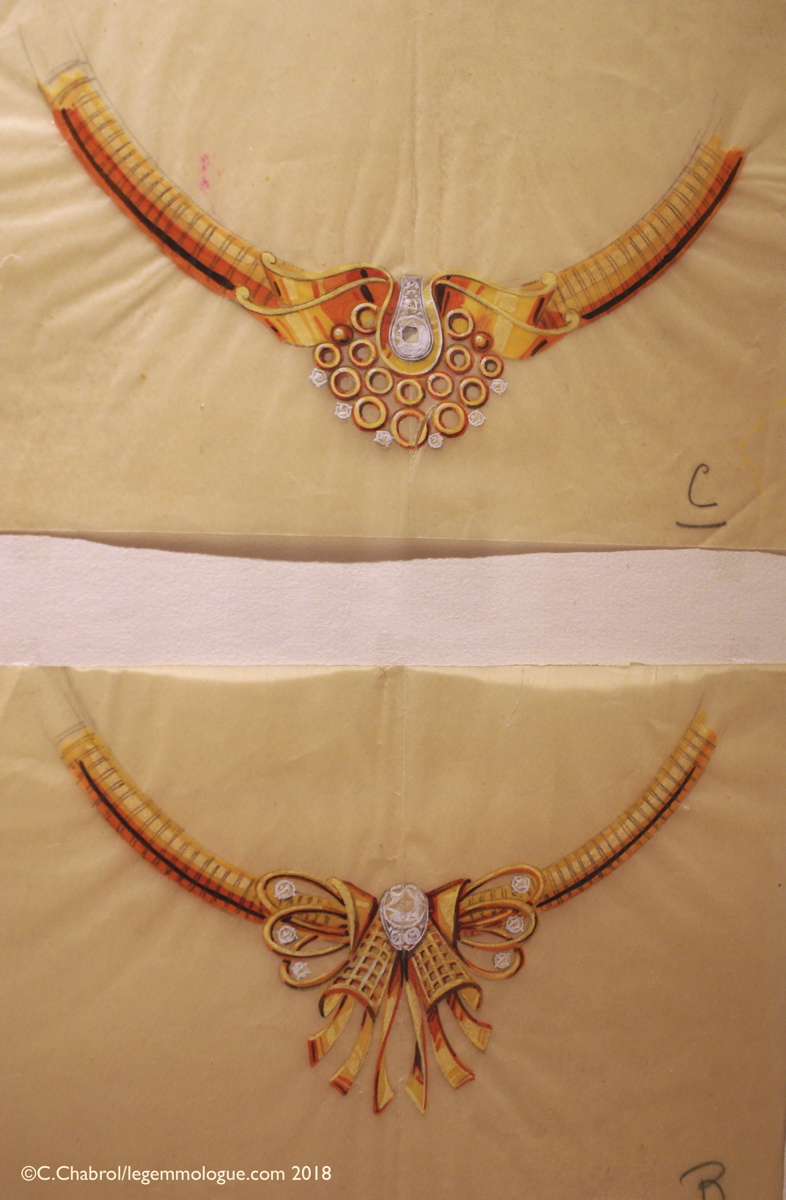
Gold and diamond necklaces. Around 1950. Photo: C. Chabrol
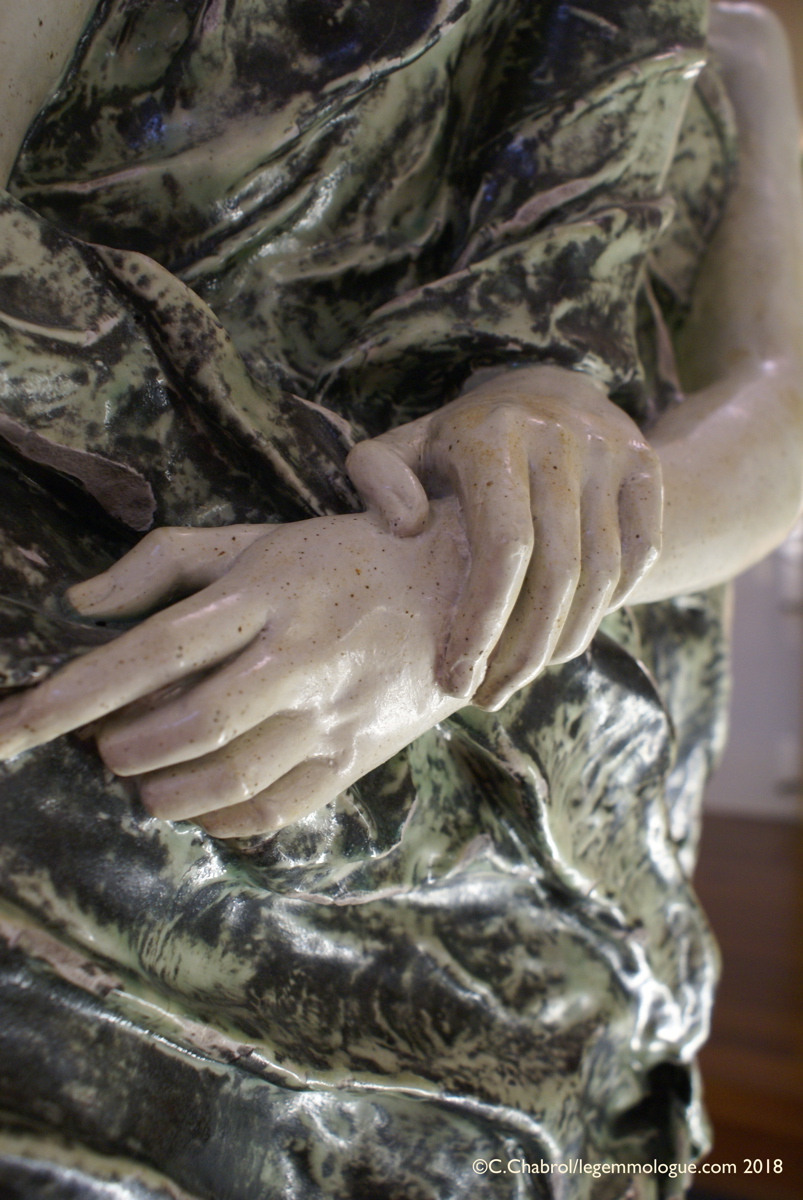
Detail of a statue in the museum. Photo: C. Chabrol
Gouaches are fragile documents, they do not stand up to light and deteriorate easily over time. Such a collection is exceptional because never before have so many drawings of jewellery been accessible at the same time in the same place. It is also a touching exhibition because you will inevitably recognise jewellery that you have seen and perhaps handled. No doubt they will remind you of certain family treasures kept in small boxes… Finally, if you are from the region, the house of Dael & Grau is certainly not unknown to you and this rare heritage deserves to be rediscovered.
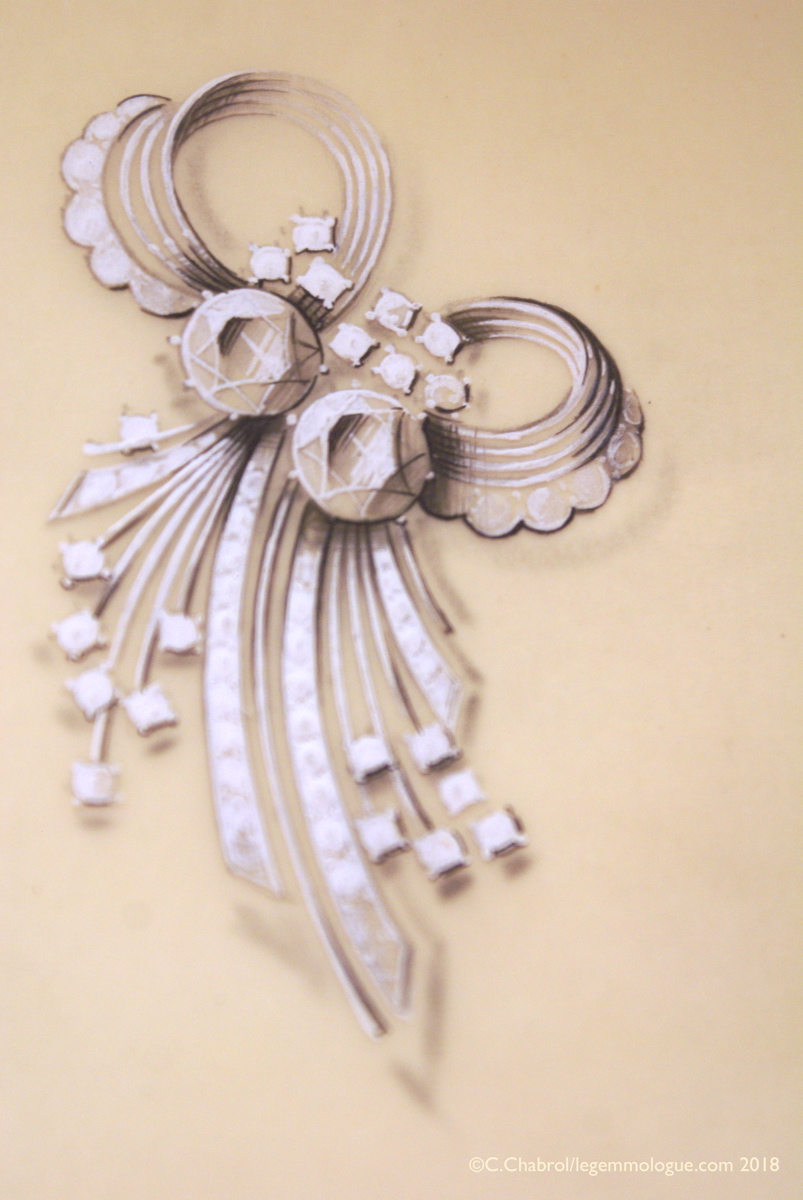
Gold and diamond brooch. Photo: C. Chabrol
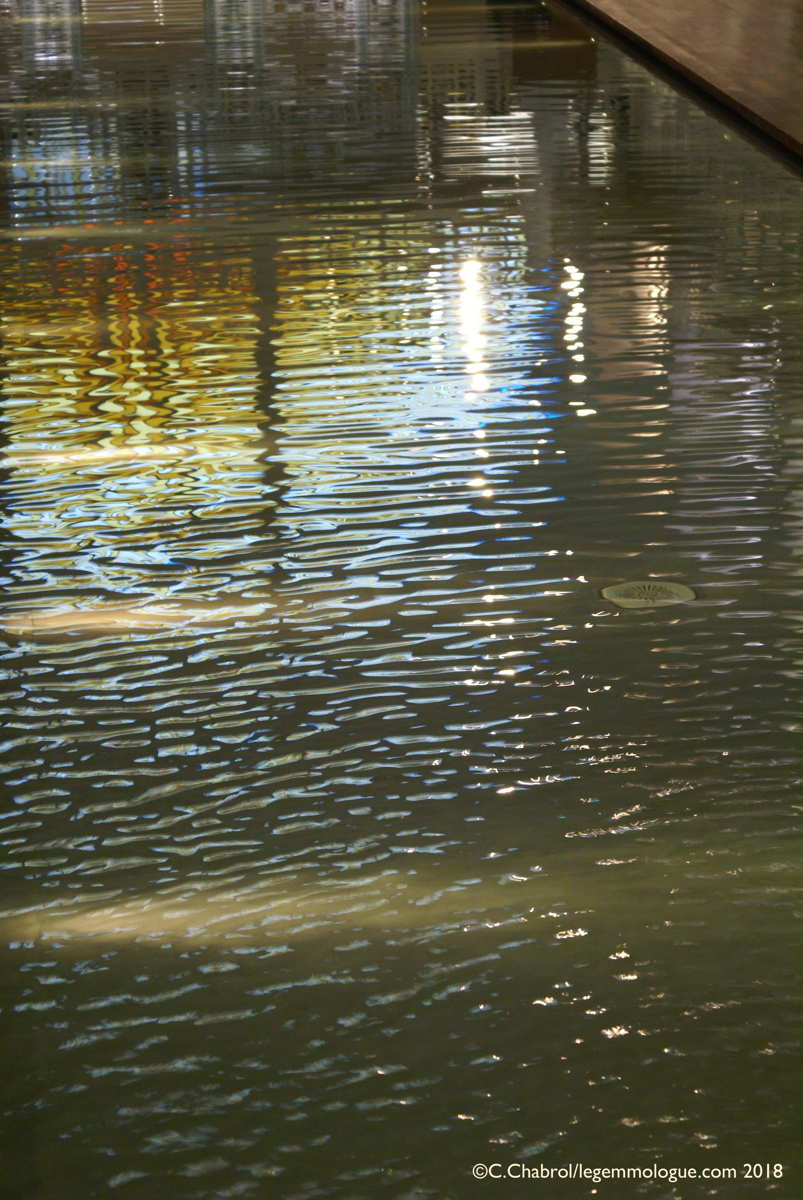
End of a visit by the pool. Photo: C. Chabrol
You have until 1 April 2018 to visit it. Don’t miss this event, it would be a shame if you are passionate about the history and techniques of jewellery making.
See you soon!
